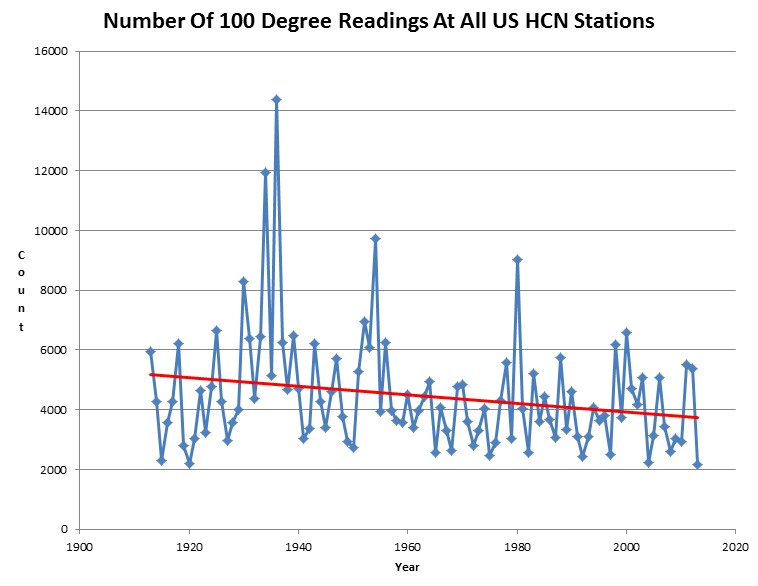This past summer had the fewest 100ºF readings of any summer in at least a century in the US.
Summers used to be much hotter in the US, and over the last century, 100ºF readings have dropped by 25%. The summer of 1936 had more than seven times as many 100ºF readings as 2013.
Index of /pub/data/ghcn/daily/hcn/
According to NOAA, 2012 was the most extreme year in US history – yet their data shows that it didn’t even rank in the top twenty for hot days. They consider mild winter days to be extreme, and then count each mild winter day as two extreme temperatures (minimum and maximum.)
In 1907, the US Weather Bureau explained NOAA’s actions :
JANUARY, 1907. MONTHLY WEATHER REVIEW.
It is wrong to mutilate or suppress the record of an observation of a phenomenon of nature, but it is also wrong to make a bad use of the record. In fact, it is the misuse of meteorological data, not the observing or publishing, that constitutes a crime against the community.



Steve, there is a typo in the 2013 Mild Summer article: “The summer of 1936 had more than seven times as many 100ºF readings as 1936.”
Never mind! Corrected while I was posting. Excuse me!
Counting warmer minimum temperatures as an indication of extreme warming is what happens here in Australia all the time. The continual claims about all time record temperatures are based on warmer minimums than hotter maximums.
Proving this is difficult because most of the weather stations from the past have been moved making true comparisons impossible.
Uzbekistan? Patagonia?
We live near Spokane, WA, USA. It used to get over 100 every year for a while. Spokane hasn’t had a 100 degree day in 5 years. Very unusual.